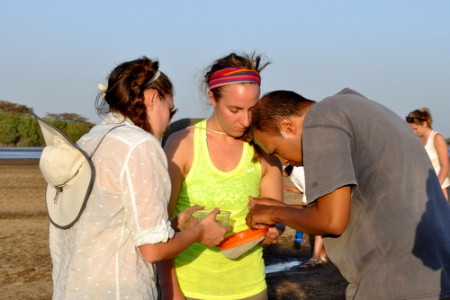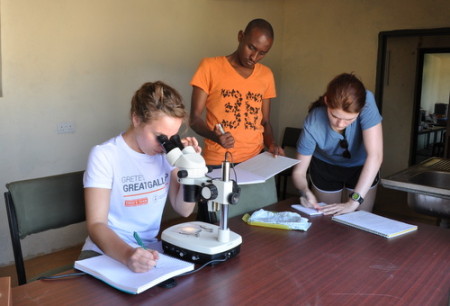After a lecture on malaria, mosquitoes, and other common diseases and their carriers, the students headed down to the river for a practical on the identification of mosquito larvae and pupae. We were joined by a National Geographic film crew and the students were very excited.
Female mosquitos lay their eggs in water, where they remain util they reach the adult stage of metamorphosis. There are three main types of mosquito – anopheles, aedes and culex. While all the females of these species feed on blood, anopheles mosquitoes are the only carriers of malaria. A prize of chocolate and oreo cookies was offered by Dr. Martins to the first people to find anopheles larvae or pupae.
At first the students couldn’t find anything in the algae-rich ponds, but when they moved closer to the river they discovered ponds with many larvae and pupae. The students were so good at finding them that Dr. Martins announced that everyone would get a share of the prize.









